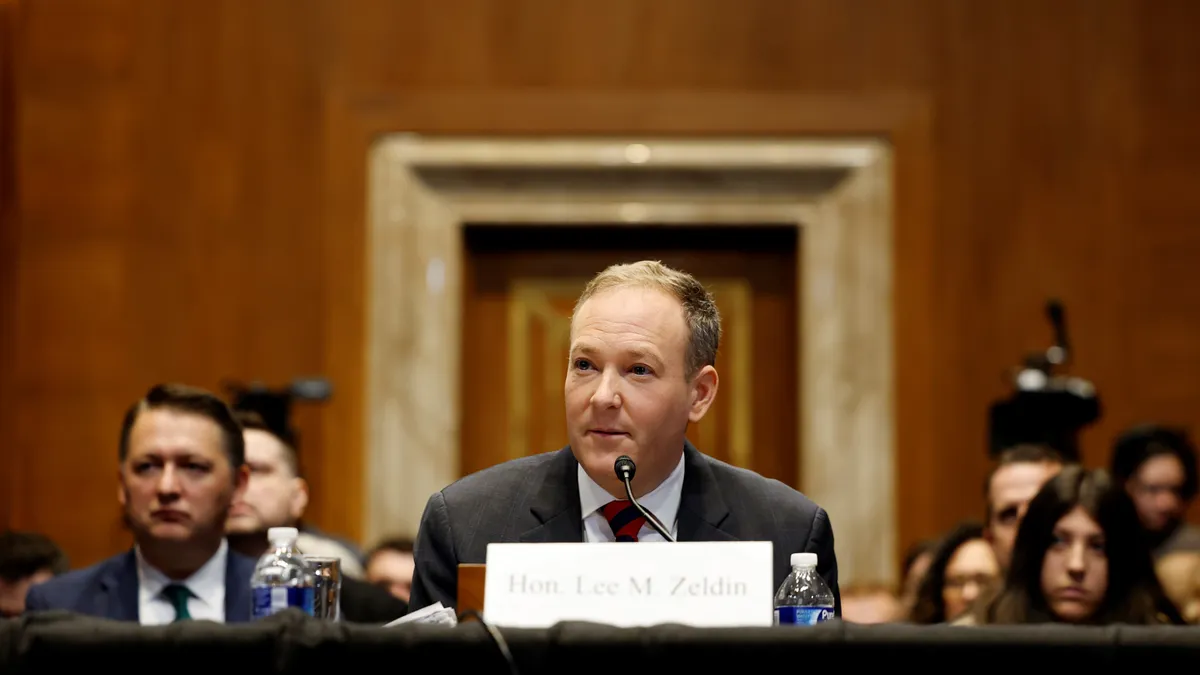The following is a Viewpoint from Ray Gifford and Matt Larson, managing partner and partner, respectively, in the Denver office of Wilkinson Barker Knauer LLP.
All the comments on the DOE’s Grid Resiliency Pricing Rule proposal have been filed. We now await action from the Federal Energy Regulatory Commission, expected on December 11.
A slog through the bounty of comments received illustrates that, to borrow from the hip-hop duo Nice & Smooth, Ain’t a Damn Thing Changed. There was certainly some support for the proposal in the comments and some creative and even reasonable modifications proposed. Nevertheless, to do a brief and simplified taxonomy, most commenters spurned the proposal and they fall into two camps:
First, there are the market purists, who continue to insist that Restructured Administrative Markets are fine (never-mind the myriad of already-existing interventions and price distortions). For these market purists, many of whom either endorsed or even helped formulate ‘around market’ solutions from RECs to ZECs, the DOE and the FERC should stop this unnecessary charade of a proposal and move on. Because, after all, everything is fine.
The difficulty, at the blackboard economics level, is that a neoclassical competitive market clearing at the marginal cost of production does not present an opportunity to recover fixed costs. In an industry with high fixed costs, this is a problem. It becomes more of a problem when certain resources are viable even at negative prices, due to favorable tax treatment.
Hence, the ‘market’ needs some way to cover those fixed costs. And the Restructured Administrative Market Model has come up with multiple means, some of them elegant, others less so. For example, capacity markets are one market addition, but here the success depends on the duration of the capacity payment. Too short a time frame leaves massive fixed costs in the generation industry barely touched. This is but one example of efforts within the Restructured Administrative Markets to cover fixed costs through ersatz market institutions.
Forget about constitutional consistency. Expect those advocating for state rights to protect renewables to jettison those principles when it comes to fossil fuels.

The second group of commenters are the end of game proponents, the “winning isn’t everything — it’s the only thing” point of view. For these commenters, it does not matter how we achieve a particular result from a legal or regulatory perspective so long as the result ends up killing fossil generators, with nuclear as an unfortunate (or in some cases desired) casualty.
To these “market instrumentalists,” market interventions or ‘around market’ interventions — indeed, the very markets themselves — are all just means to a desired end where renewable generators win, coal generators lose, and natural gas generators are tolerated as a bridge fuel (but not defended or protected as it meets the same fate as coal in certain markets). ‘Around market’ interventions that save nuclear are acceptable, but the validity of the intervention is wholly based on the resource mix outcome.
Forget about constitutional consistency. Expect those advocating for state rights to protect renewables to jettison those principles when it comes to fossil fuels. Any state intervention to save coal would be anathema to the market instrumentalist, which explains the hostility toward DOE’s grid-resiliency proposal. Because the proposal benefits coal and nuclear generation, the market instrumentalists cannot abide such an intervention. And, perhaps the richest part of it all is that many of these commenters do not object to ZECs, so to riff on Michael Jordan and Mars Blackmon, it’s gotta be the coal.
After digesting these comments, our only takeaway is that ain’t a damn thing changed. Market purists and market instrumentalists alike continue to pretend these markets are fine — no problem here, folks. The market instrumentalist chorus shouts that the DOE proposal somehow represents a severe departure from the ‘marketisms’ and ‘around market’ solutions of yesteryear which were cloaked in acronyms like ZEC, MOPR and RMR.
Meanwhile, the marketisms continue unabated even as critics carpet-bomb the DOE proposal. In California, the CAISO hit the trifecta by identifying load-serving entities and collective capacity deficiencies in multiple areas of the service territories of Pacific Gas and Electric, Southern California Edison and San Diego Gas and Electric, the three largest utilities in the country’s most populous state.
These findings are a symptom of a larger issue in the CAISO, which has signed increasing numbers of RMR contracts with gas generators to ensure they are available. Fuel type aside, this is not fundamentally different than the DOE proposal — a cost-of-service payment to a generator in a Restructured Administrative Market.
After digesting these comments, our only takeaway is that ain’t a damn thing changed. Market purists and market instrumentalists alike continue to pretend these markets are fine — no problem here, folks.

In PJM, a new price formation proposal has taken root, whether driven by self-consciousness, self-preservation, or some other Restructured Administrative Market instinct is unclear. Let’s be blunt here — PJM’s proposal at its core is nothing more than the DOE proposal dressed in a PJM jersey. Strange — given that PJM’s comments called the DOE proposal “a direct assault on competitive markets.”
Really? PJM’s proposed real-time, 30-minute operative reserve product is facially agnostic as to resource type but targets inflexible coal, nuclear and even large gas units. Slightly different, but sound familiar?
Market Monitor Joe Bowring calls the PJM proposal “a slippery slope,” and we do not disagree. But unlike Bowring, we posit we are already way down the slippery slope; the slide started with MOPR, RMR and other machinations, and continues with ZECs and now the latest proposals from DOE and PJM alike.
The markets themselves realize a short-run marginal cost market is disastrous. While the DOE proposal is not elegant or pure, neither is the PJM proposal or any other ‘marketism’ or ‘around market’ solution that we have profiled in our past work.
The ain’t a damn thing changed approach of the market purists and market instrumentalists will accelerate the impending ruin of the Restructured Administrative Market Model. We need to have an honest conversation about the deficiencies and major problems for resources with fixed costs in the Restructured Administrative Markets.
Ignore the jersey the ‘marketism’ or ‘around market’ solution is wearing, each looks pretty much the same. We should acknowledge that and address the problems in the Restructured Administrative Markets, including whether they can continue to exist in their current form — or whether they deserve to exist at all.
Ray Gifford is the managing partner and Matt Larson a partner in the Denver office of Wilkinson Barker Knauer LLP. After his last piece ran in Utility Dive, Gifford was retained and provided an expert affidavit in the Resiliency docket on behalf of First Energy Services, Inc.






















